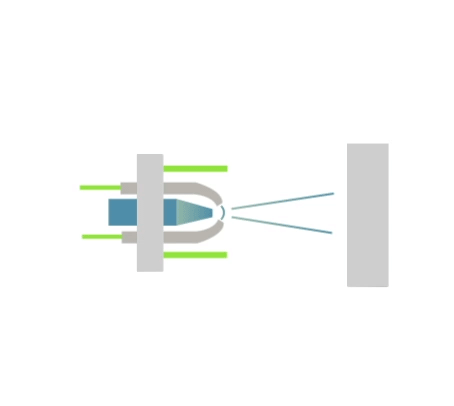Spraying is an additive manufacturing technique in which a layer of material is applied to metallic objects without partially melting the substrate material, and the resulting coating is bonded to the substrate mechanically or adhesively, and in some cases diffusely. The surface temperature of the sprayed objects can even rise to a value close to the melting point, but the surface should never be partially molten.
Depending on the heat source in the process, spraying can be divided into:
- flame spraying – a process by which layers (mainly metals, ceramics, cermets) in a liquid or partially molten state are applied to metallic or non-metallic substrates by the heat of a gas flame in order to obtain a coating that adheres strongly to the substrate;
- arc spraying – involves melting two solid or flux-cored wires with the heat of an electric arc at a temperature of about 4,200-5,000 ◦C, glowing between their ends, the wires being fed at a constant and uniform speed. At the same time, a powerful jet of compressed air atomises the molten wire metal into very fine particles and hurls them at high speed onto the surface of the object to be sprayed.
Spraying processes can also be carried out using plasma arc and explosive machining.

